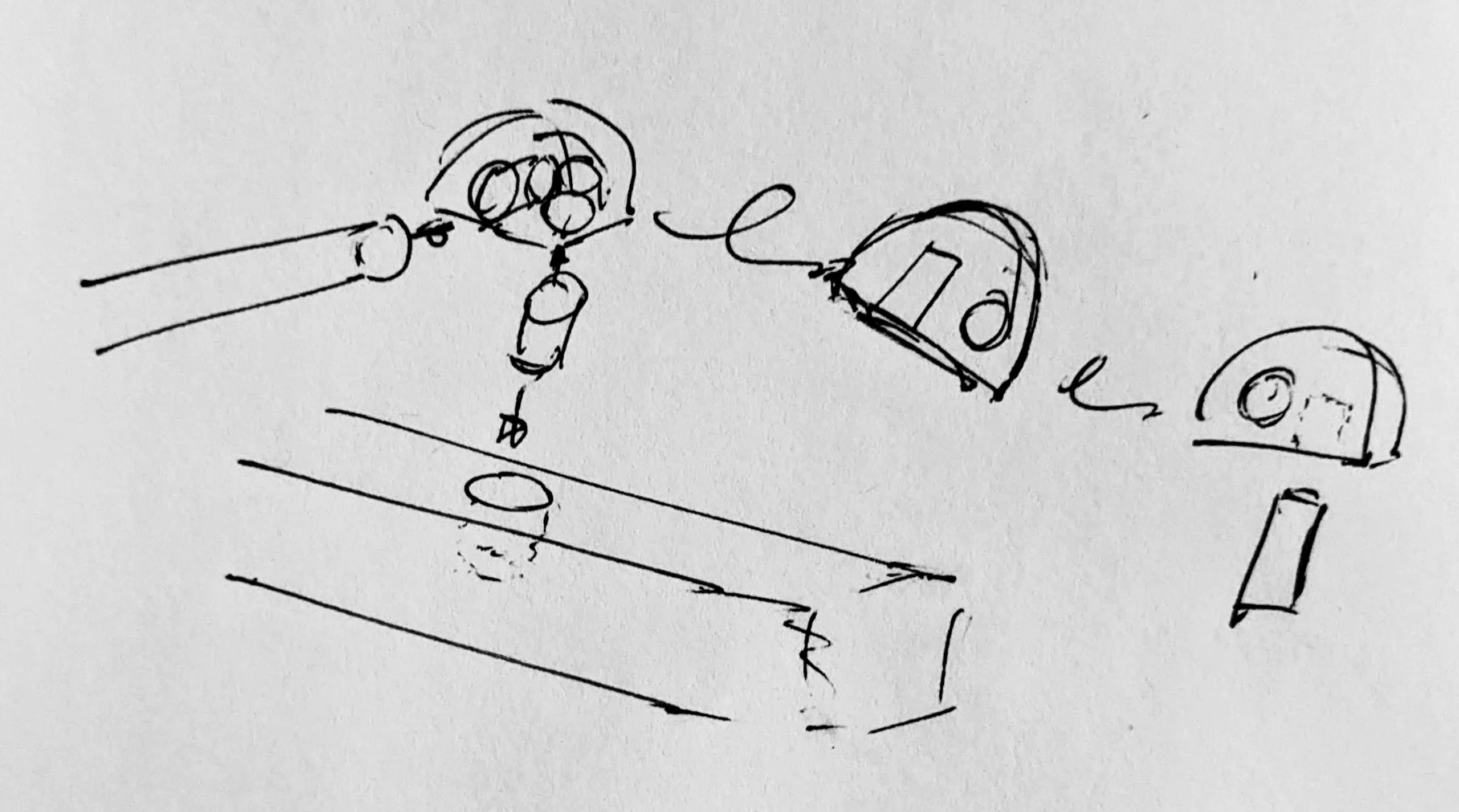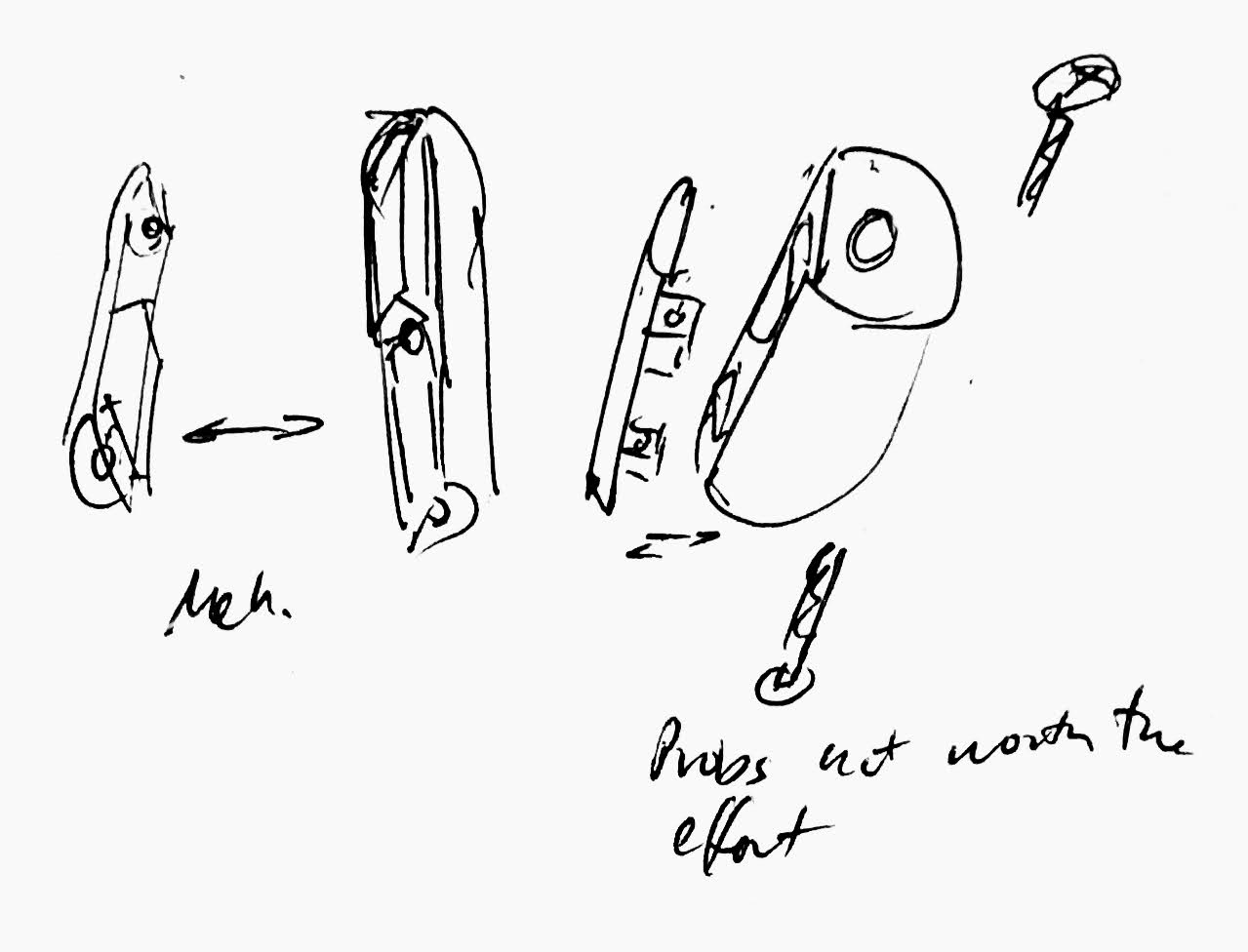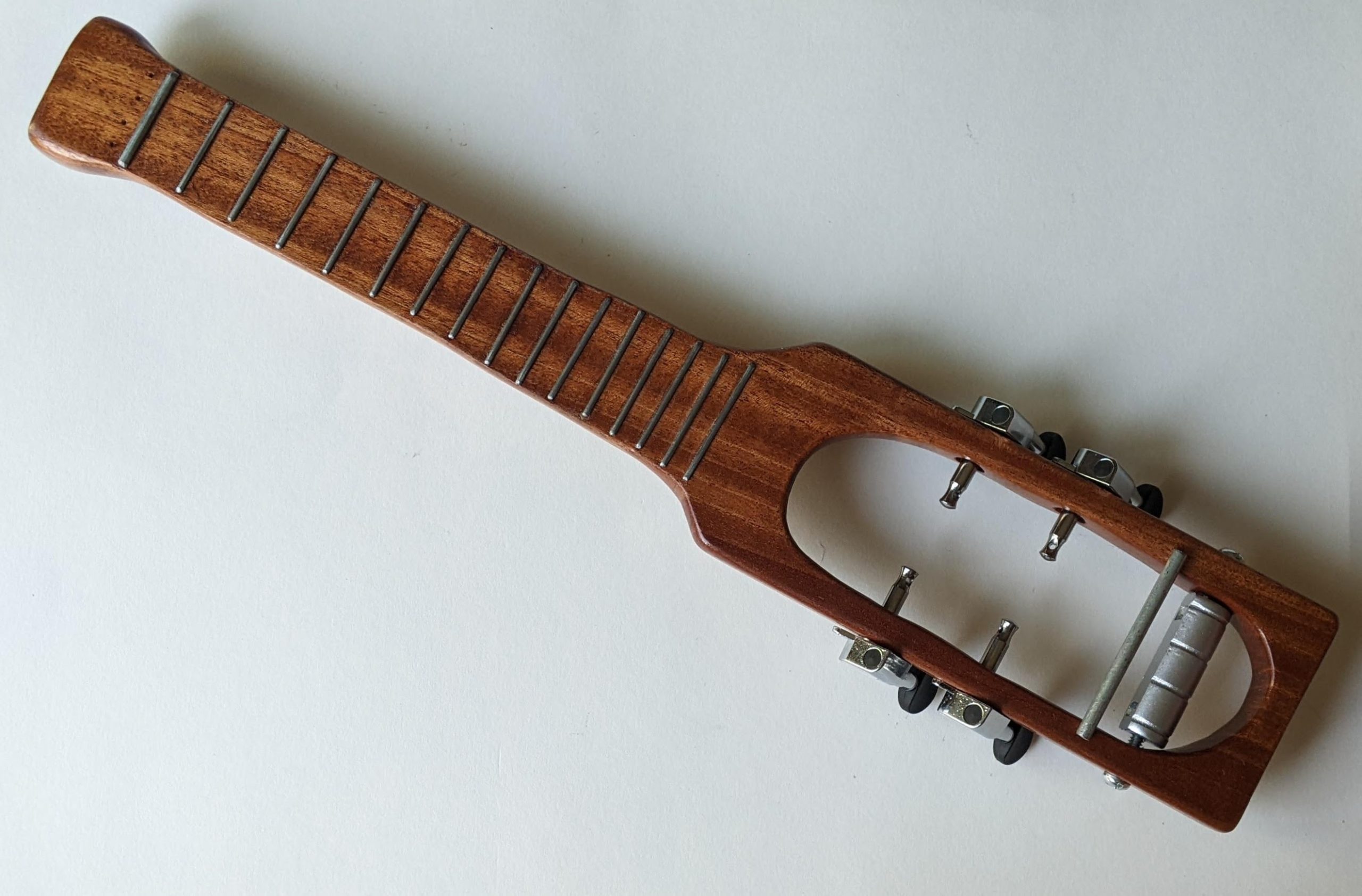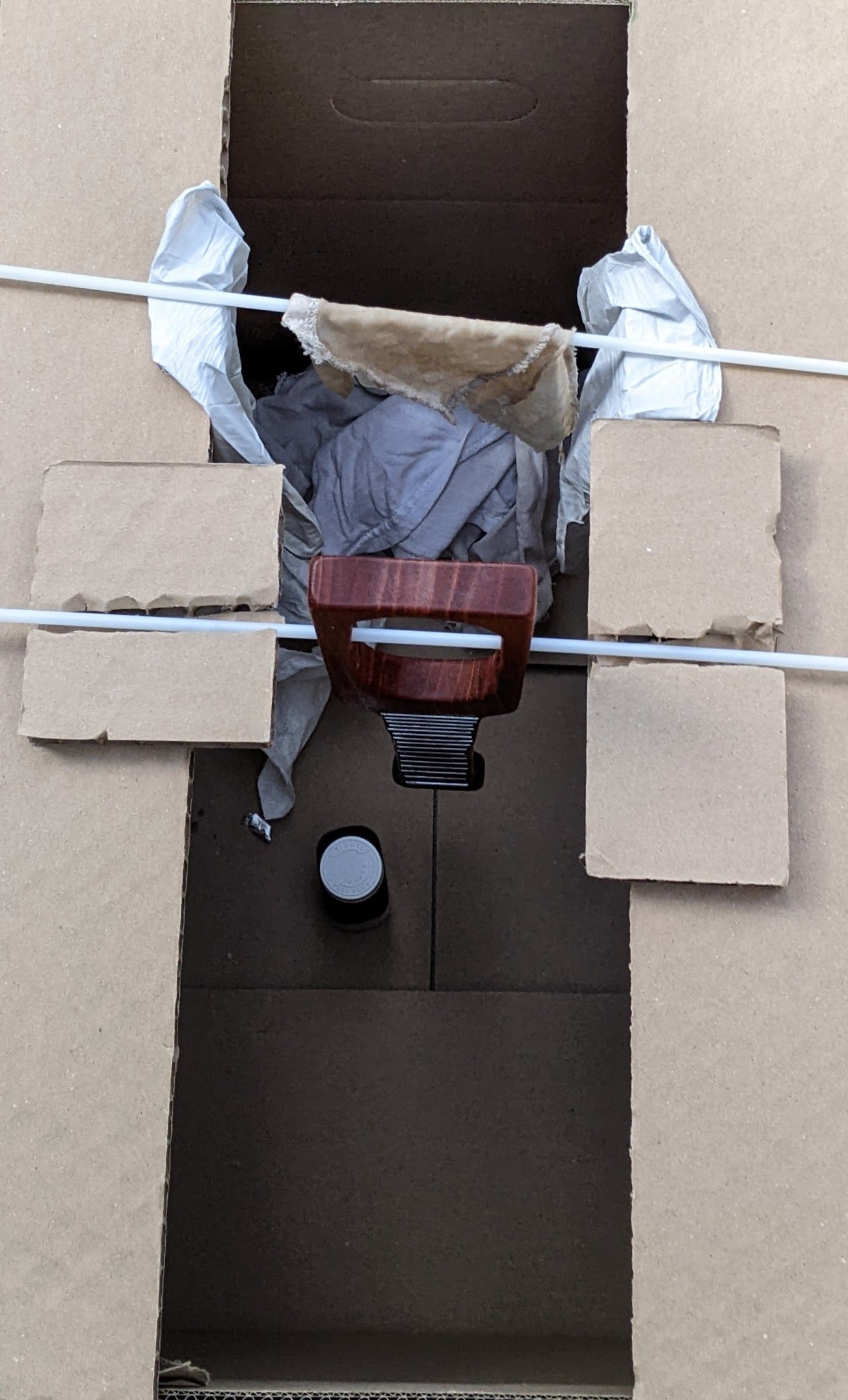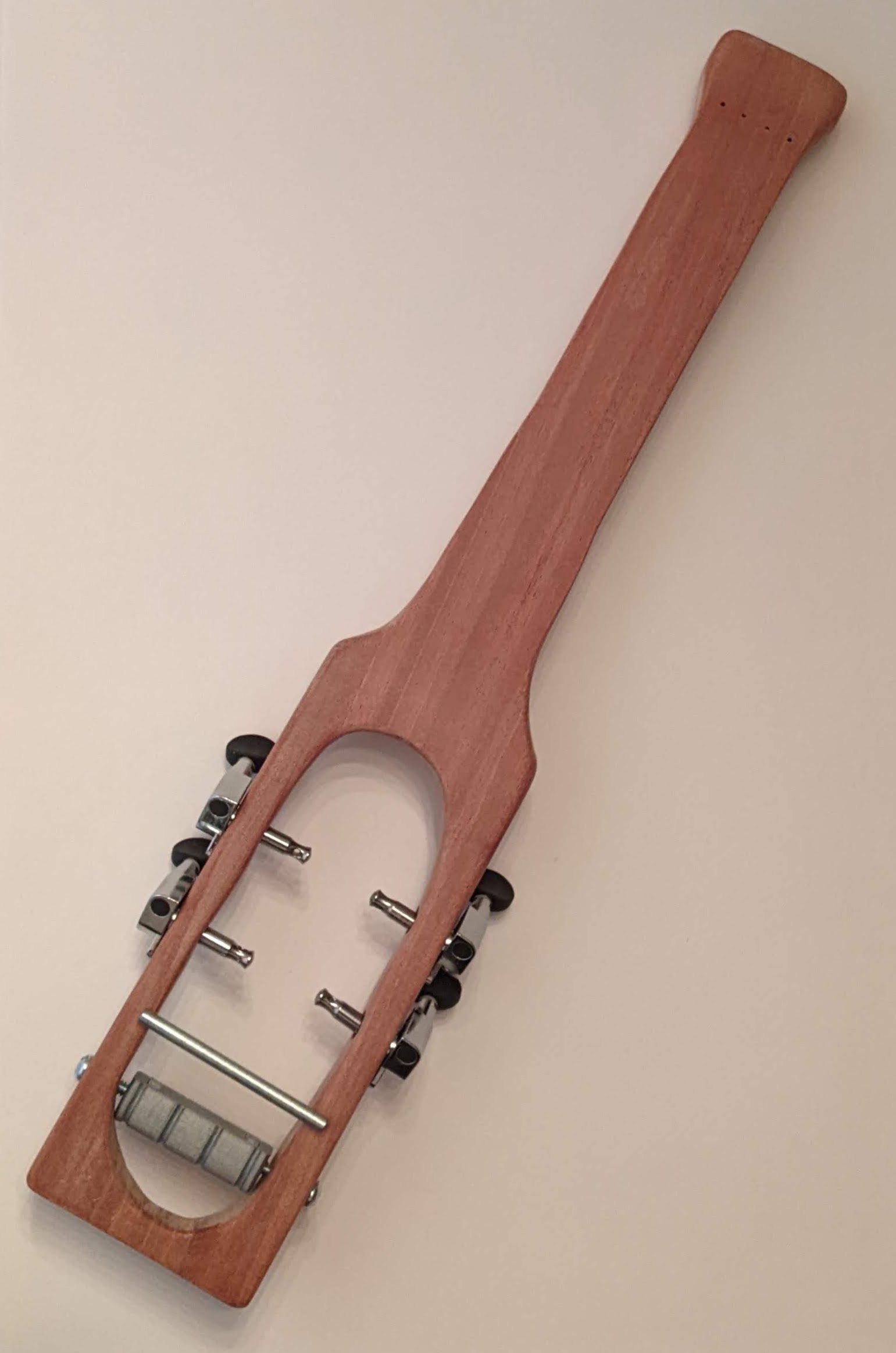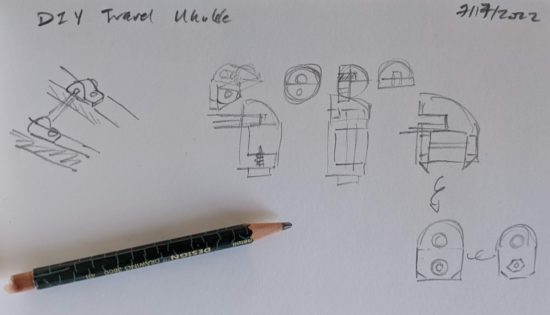I’ve tended to avoid referring to this project as a “ukulele” and usually refer to it as a “piece of wood” or “plank.” Today I’m calling it a ukulele since I was able to actually string it up and play it.
- Bridge.
- I wasn’t happy with the bridge brackets. They looked uneven and even after plenty of time to dry, they still felt… gummy? Tacky? Grubby?? Not great, in any event. I sanded them last night, again this morning, 150 grit, 400 grit, and then 1500 grit, washed them with soap, washed them without soap, set them out to dry, spray painted them again, set them out again, and this time after several hours they were dry. They went onto the bridge and then the plastic posts in the ukulele with minimal post-processing. It fit snugly with a little bit of force and went flush against the body of the ukulele.
- Strings.
- I’ve never added strings to a ukulele before, so this was entirely new to me.
- I watched this video again and then dove into putting the strings on the ukulele. This was another of those moments which felt a little tense. In the end, it was really just the idea of doing something new and possibly ruining a string or a set of strings. 3D printing is so forgiving. If I screw something up in design or printing or finish… I can just make more. Wood and strings and metal are not so easily fixed. Anyhow, it all turned out okay.
- Using what I’d learned from Soph, I decided to tie a knot in the strings, leaving enough extra so they could be fed back into the string holes, preventing any sharp bits from poking me as I played.
- I had drilled the string holes under the ukulele with a slightly larger diameter drill bit than the one at the top, so most of the knots disappeared into the holes. Whenever I need to replace these strings, it will probably be a pain to get them out again, but that’s a problem for future me.
- I play my ukulele with a “C” tuning, so these strings my wife bought me to go in my regular ukulele worked just fine. If you’re right handed, play chords with your left hand and strum with your right hand, then when you grip the ukulele neck in your left hand, the 1st string (A) would be closest to your fingers and the 4th string (G) would be nearest your thumb. Going from the thumb-side to the finger-side, they would be 4th / G string, 3rd / C string, 2nd / E string, and 1st / A string. I put a sticky note on my ukulele while I added the strings, one at a time, so I wouldn’t get anything mixed up.
- After I got the strings on, I wrestled with tuning the strings. They seemed to go out of tune pretty quickly – but I suspect this is due to the strings stretching a little.
- I’m glad I waited to install the strings and bridge until I had the black oxide hardware. I’m sure the chrome or stainless steel would look great, but I prefer these design elements together.
- Volume.
- It’s a quiet instrument, but actually sounded a little louder than I would have expected. After playing the travel uke for a few minutes, I grabbed a nearby checkbook box lid and put it between the ukulele and my body, which seemed to add a bit of volume. As you know, I have a decibel meter from my whistle experiments, so I performed a little science for you.
-
Instrument Decibels Travel Ukulele, strumming 57.9 Travel Ukulele, playing 73.6 Travel Ukulele (with box), strumming 64.8 Travel Ukulele (with box), playing 75.8 Soprano Ukulele, strumming 82.7 Soprano Ukulele, playing 94.5 - I was pleasantly surprised the checkbook box added so much to the volume. It was an audible difference to myself and my family. I may try this again with a wood box, plastic box, plank of wood, and sheet of plastic. I have to wonder if something as commonplace as a frisbee would work well. If so… awesome.
- Sound.
- I recorded myself playing the first few bits of House of the Rising Sun first with my store-bought soprano ukulele, the travel ukulele, and then the travel ukulele with the checkbook box lid underneath it. I start off each 45 second sound test with a single downward strum on each chord before playing the first part of the song.
- Here’s a single video comprised of the three clips one after another.
- Turn Around
- The stainless steel turn around I swapped out for the black oxide ones (for purely aesthetic reasons) were only 1.25″ long because that’s what Home Depot had easily available. Since I could choose almost any length and style, the black oxide machine screws are button head, socket drive, and 1.5″ long. Since the ukulele is exactly 3″ wide, there was a chance the screws would touch in the center preventing the turn around from being secured in place. Adding washers preventing this from being an issue – while also looking neat.
- If you’re willing to use a 1″ long machine screw, there are a lot of other potential choices for materials. You could get bronze, steel, black oxide, chrome, nylon, etc. I can’t be absolutely certain using 1″ screws would be fine, but I’m pretty sure it would be. The plastic is really sturdy with thick walls, beefy infill, and able to withstand a fair amount of lateral compressive force based on how I chose to orient the print.
- Fret Markers
- I suspected that just using a hole punch on the cellophane wouldn’t work well. I tried it anyhow. :) All it did was deform the cellophane. Then I tried it again after pressing the cellophane into the sticky part of a post-it note. I then tried punching it with the hole punch upside down and right side up. I didn’t see much of a difference either way.
- In a perfect world, I would not have strung up the ukulele yet, figured out the fret markers, maybe added another layer of finishing oil, waxed again, and then installed the strings. I was impatient, so I just went for it.
- Before I add fret markers, I’ll want to finish a larger piece of scrap wood1 to test the optimal glue and whether different sides of the cellophane behave differently.
Now, the ukulele is playable, but it’s not done done. Here’s what’s next:
- Figuring out fret markers
- Sanding and painting strap buttons
- Making a ukulele strap from seat belt material and heavy duty rip stop nylon, possibly with a 3D printed buckle / slider
- Write up a post-mortem of what I learned
- Always print extra parts, order extra parts, cut extra pieces, and finish extra test parts
- Testing materials, paints, finishes, and adhesives
- Be bold – maybe I’ll ruin a plank of wood, a string, or two months of work. Or maybe I’ll end up with a ukulele.
- That is to say sanding, sanding, sanding, sanding, wetting, sanding, sanding sanding, sanding, finishing oil, sanding, finishing oil, sanding, finishing oil, sanding, finishing oil, sanding, waxing, waxing, and waxing [↩]

